In this article, I will discuss about various types of structural steel finishes.
Table of Contents
Introduction
Structural steel finishing is an important surface treatment technique that enhances the properties of steel structures, providing both functional and aesthetic benefits. With the various finishing techniques available, this final stage of the manufacturing process has a significant impact on the performance and appearance of steel articles, ensuring their suitability for a variety of applications.
By improving corrosion resistance, durability and visual appeal, finishing plays an important role in the overall lifespan and effectiveness of steel construction.
Finishing provides myriad benefits, including enhanced electrical, chemical and tarnish resistance, making it an important aspect of steel preparation.
Neglecting proper steel finishing can weaken the hard work put into structural steel construction, leaving the material vulnerable to corrosion and damage over time. This can result in a significant reduction in the longevity and reliability of steel articles.
The major reasons for employing structural steel finishing are its corrosion resistance, durability and visual appeal. Different finishing techniques meet specific requirements, and selecting the most appropriate finish requires a comprehensive understanding of the processes, associated conditions and costs. To ensure optimum results, it is highly recommended to seek expert opinion and advice, especially when considering the individual requirements of a particular formulation or product.
Powder coating and galvanizing are prime examples of steel finishing techniques. Powder coating technology provides a wide range of color options and ensures uniform coverage, providing a durable and attractive finish that can withstand harsh environments.
Galvanizing, on the other hand, involves coating steel with a layer of zinc, which provides exceptional corrosion protection and durability, making it ideal for outdoor and industrial applications.
The choice of structural steel finish is also tied to sustainability and environmental considerations. As green construction practices gain momentum, the demand for eco-friendly and easily recyclable finishes is on the rise. Integrating sustainable finishes not only aligns with an eco-conscious approach but also contributes to the structures’ overall resilience and eco-friendliness.
The structural steel finish goes beyond just safety and aesthetics; They can also increase fire resistance and security. Some finishing solutions provide fire-resistant properties, increasing the safety of occupants and protecting the integrity of the building during potential fire incidents.
Let’s know various types of structural steel finishes.
10 Types Of Structural Steel Finishes
1. Galvanized Steel Finish
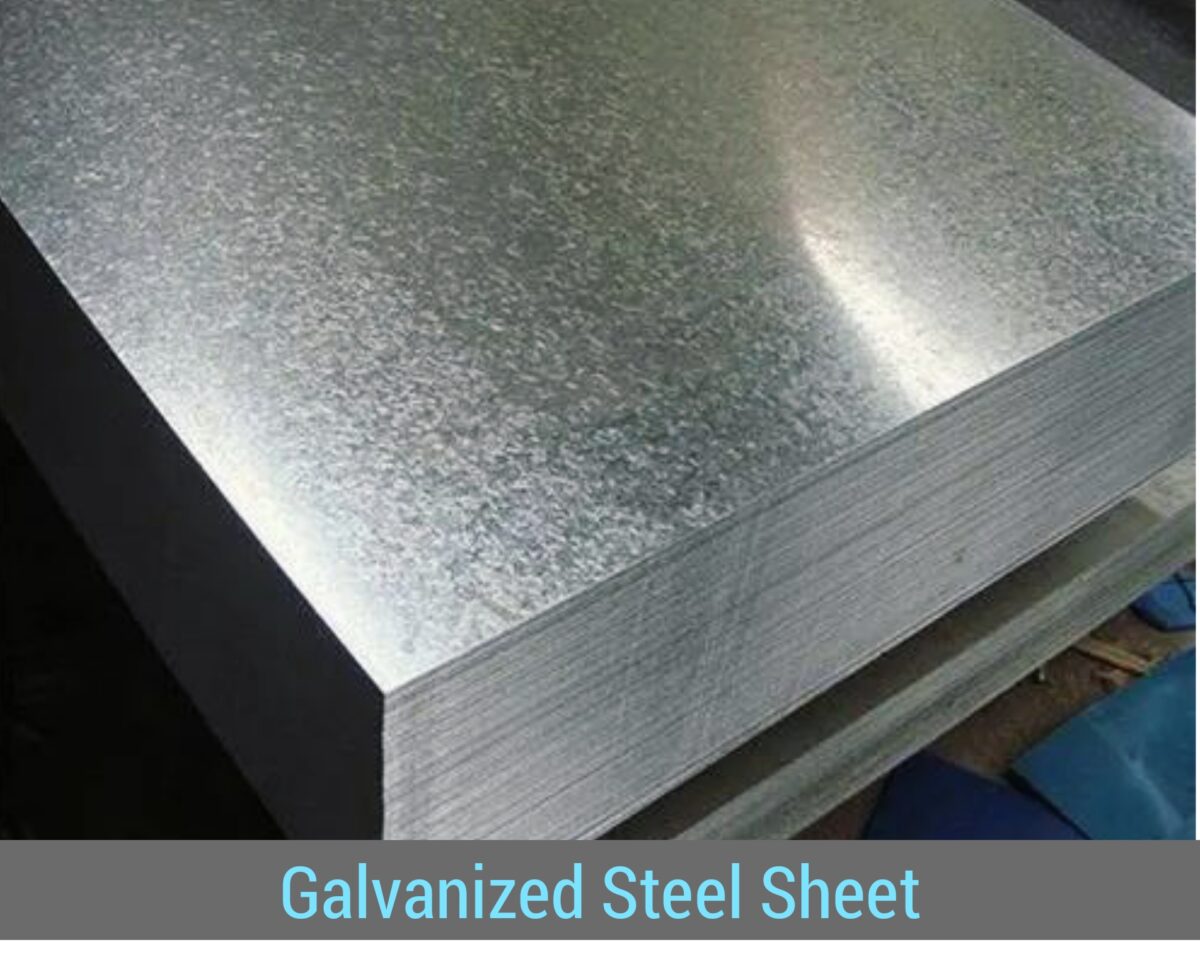
Galvanizing is a widely used method to protect steel from corrosion. It involves applying a layer of zinc to the steel, creating a barrier against the surroundings. The zinc combines with the steel, forming zinc carbonate, which shields the base metal from exposure to air. Galvanizing ensures full coverage of the component, unlike painting, and offers better long-term cost-effectiveness due to its low maintenance and longer lifespan.
2. Polyester Powder Coating (PPC) Structural Steel Finish
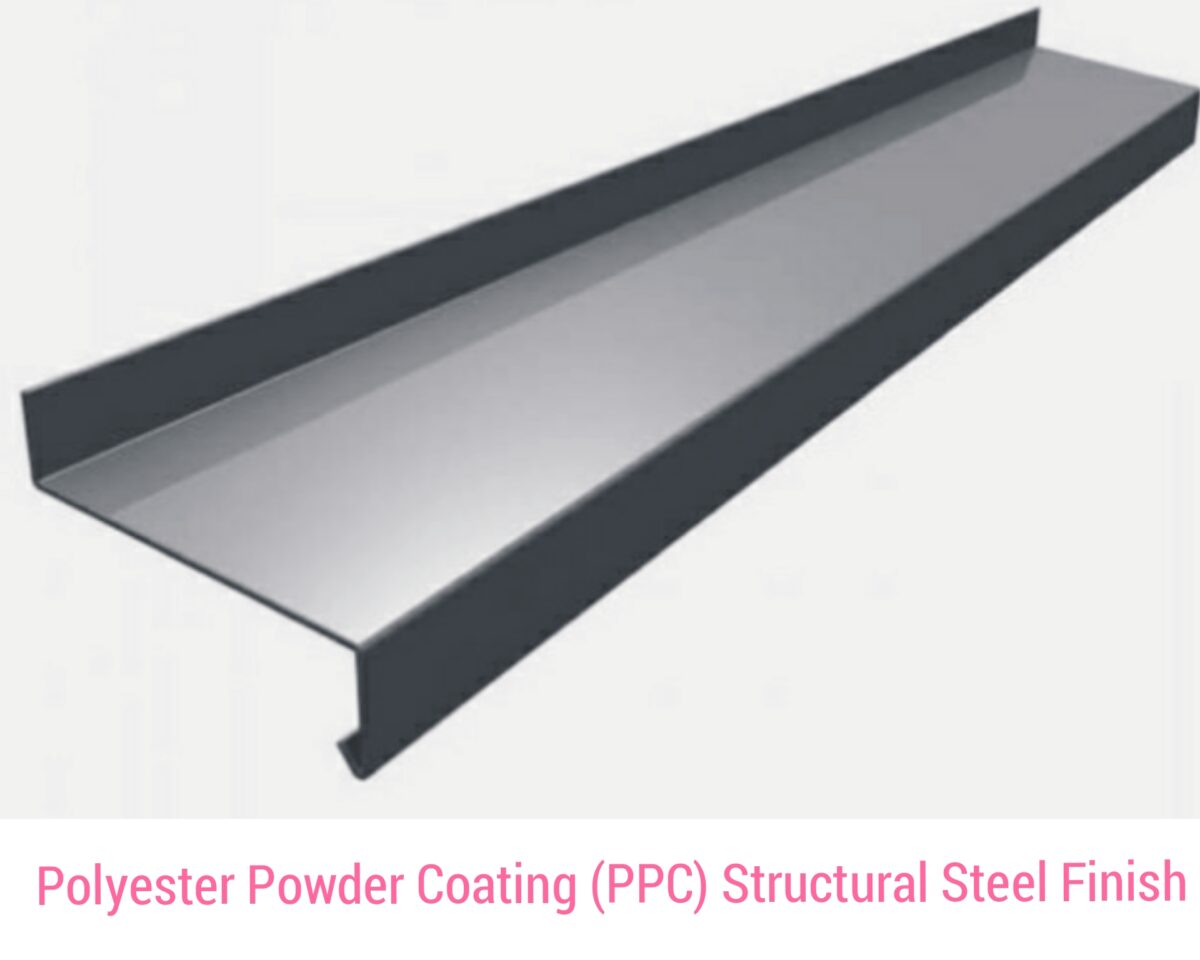
Polyester powder coating adds both color and corrosion protection to steel structures. The steel is cleaned and then coated with a powder through an electrostatic process before being hardened in an oven. This method is highly effective in preventing corrosion and provides a durable finish.
3. Mill Structural Steel Finish

Mill finish is the natural surface of metal after it exits a rolling mill or other forming processes. It appears gritty with minimal luster, often showing signs of oxidation or mill oil contamination. A light roll pass through polished rolls can slightly improve the finish.
4. Primer Structural Steel Finish
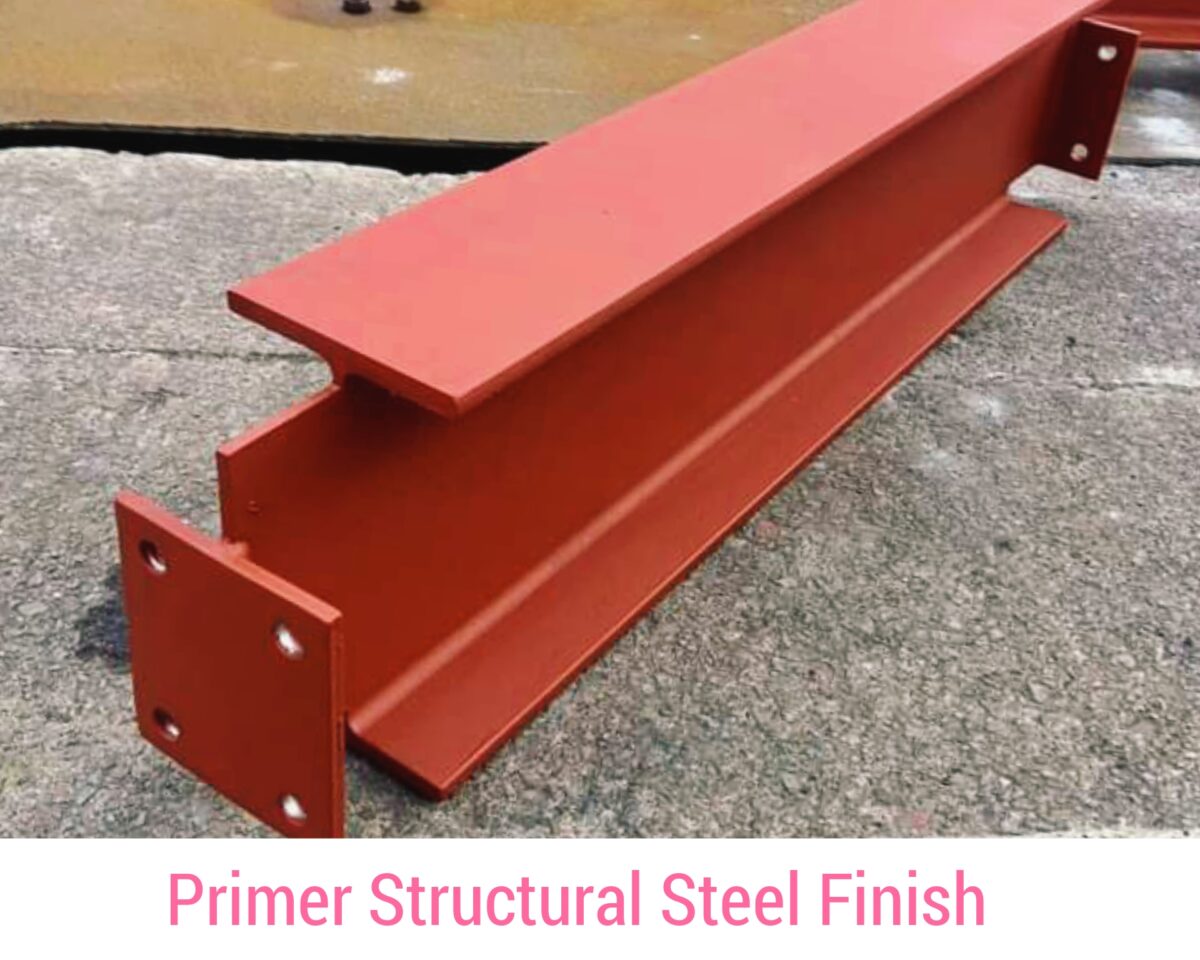
Applying a primer on structural steel improves paint adhesion, extends paint life, and provides additional protection. The primer contains a high zinc phosphate content, which resists corrosion. The number of primer applications depends on the steel’s exposure to oxygen and water.
5. Polished Structural Steel Finish
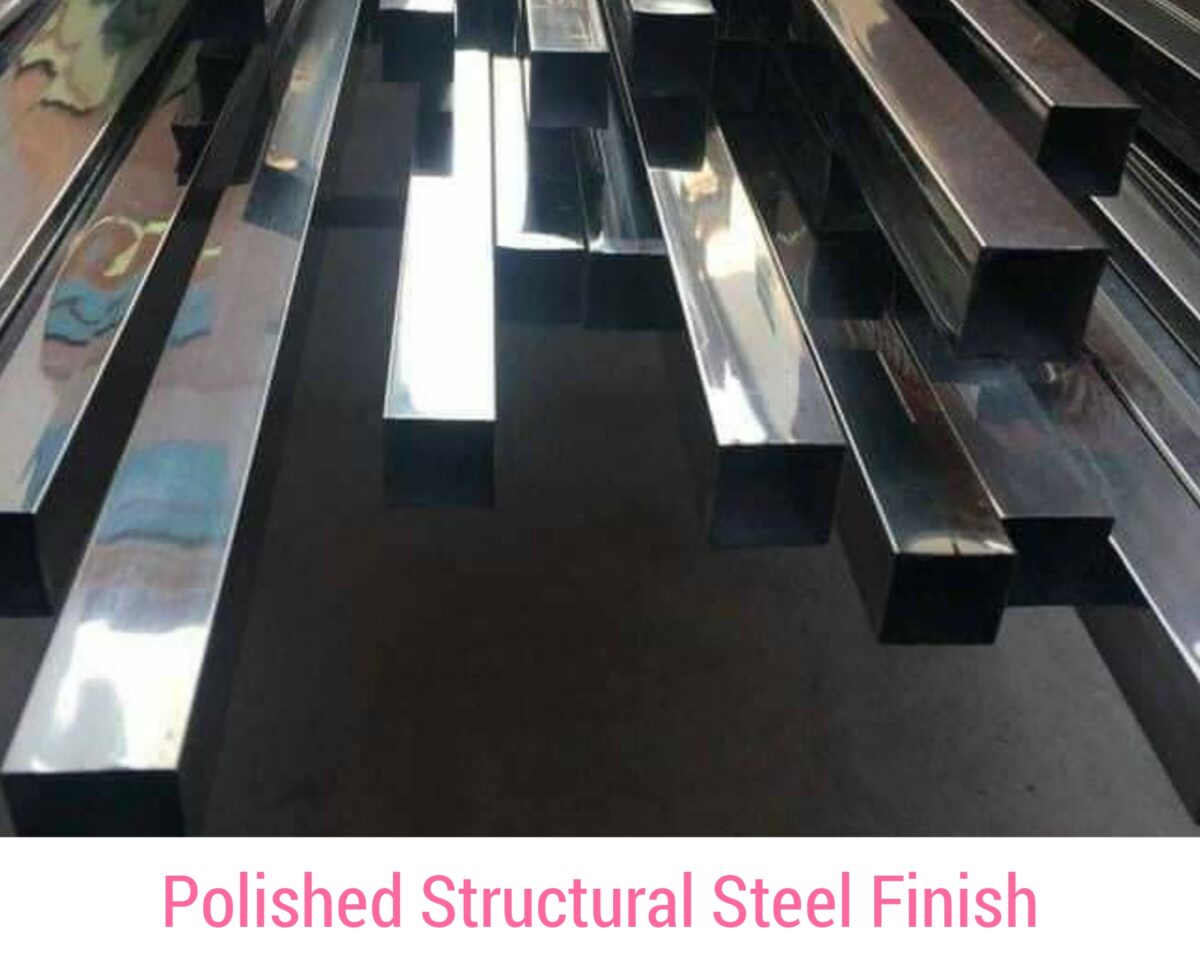
Polished finishes come in various styles, including a mirror-like appearance or a brilliant annealed finish. These finishes reflect light, creating a clean and shiny appearance, making them ideal for interior designs and storefronts.
6. Brushed Structural Steel Finish
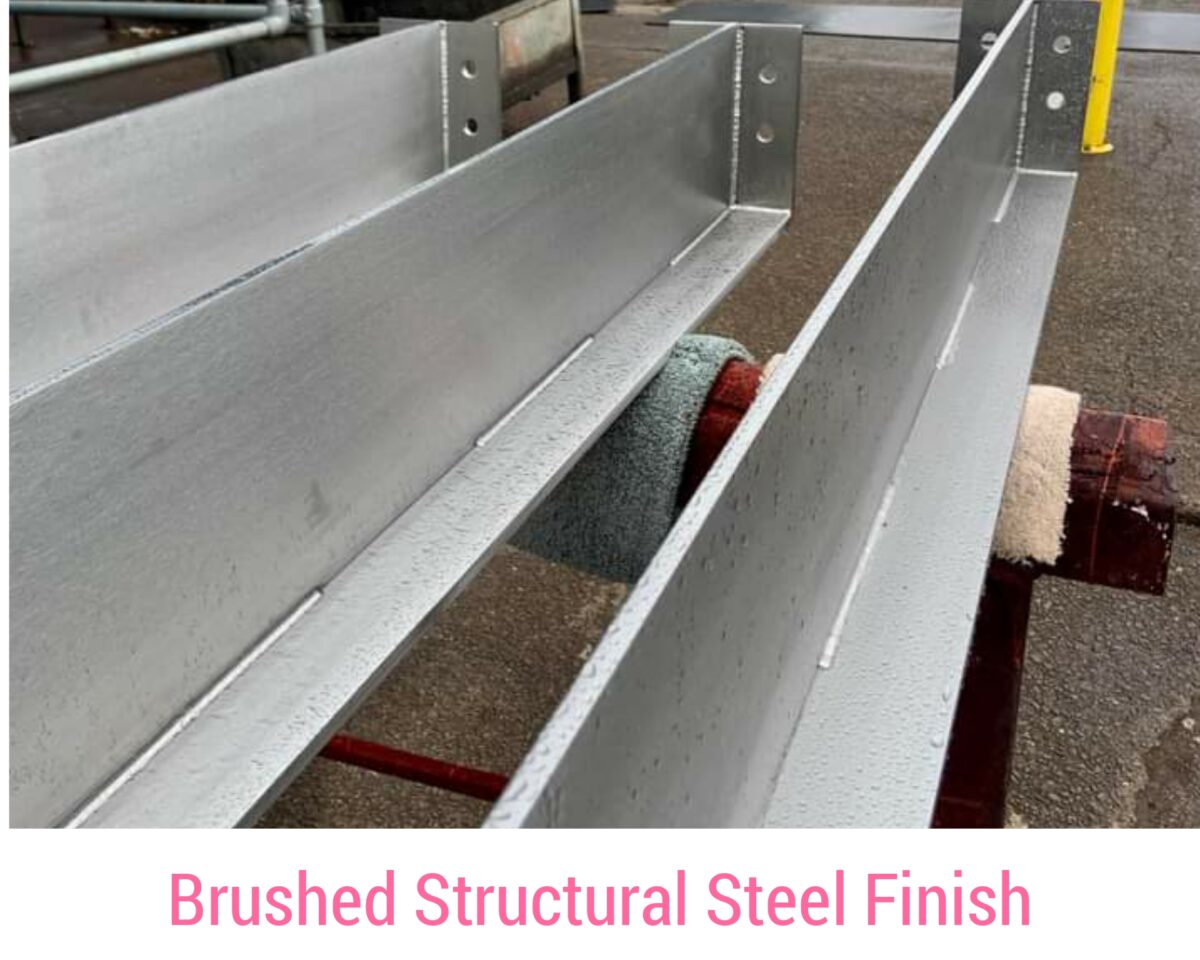
Similar to polished finishes, brushed finishes involve a light abrasion, revealing a gentle silver-gray appearance beneath the surface. It has a vintage style and doesn’t reflect light as much as polished finishes, making it suitable for structures with muted colors.
7. Blasted and Pickled Structural Steel Finish

Blasted and pickled finish involves mechanically removing contaminants from stainless steel forms before passivating them in a chemical tank. This process yields a clean and matte appearance, making it an excellent choice for industrial and exposed structures, effectively concealing imperfections and fingerprints. The finish is particularly popular for projects exposed to harsh weather conditions and strong winds, such as naval projects.
8. Epoxy Coated Structural Steel Finish
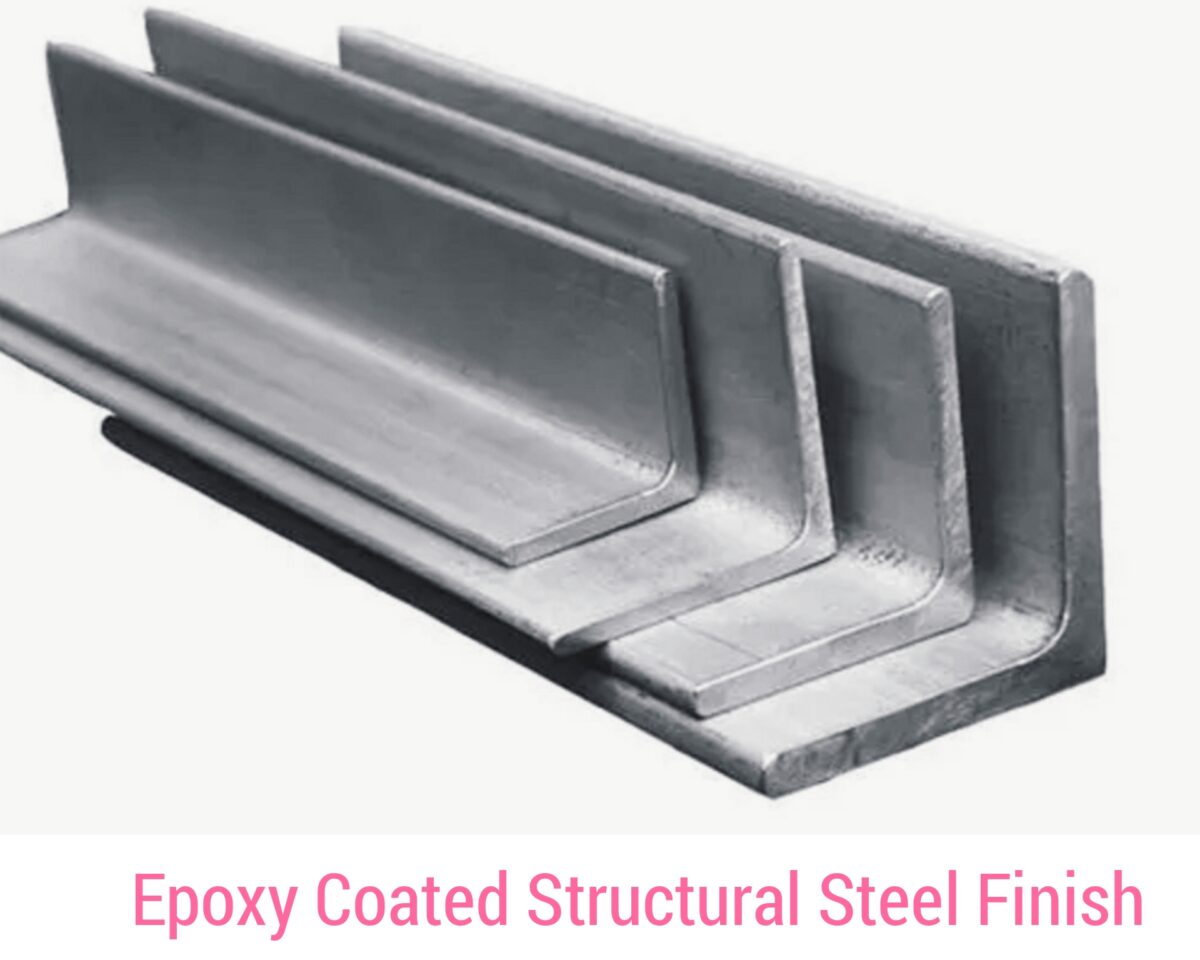
Epoxy coating is applied to structural steel to provide a durable and protective layer. The epoxy material adheres tightly to the steel surface, offering excellent resistance against corrosion, chemicals, and abrasion. It is commonly used in industrial settings and outdoor structures that require high levels of protection.
9. Rustic Patina Structural Steel Finish
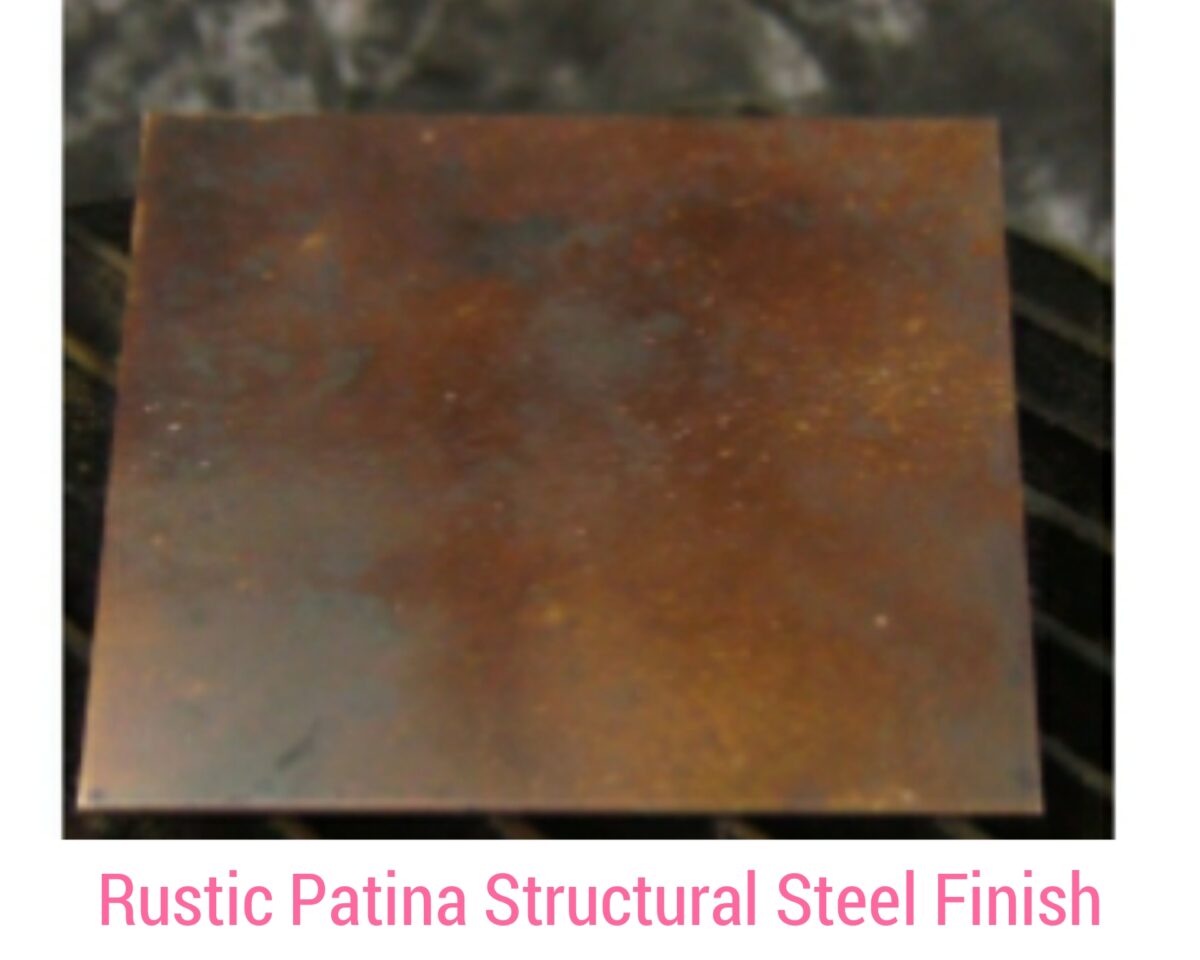
The rustic patina finish is achieved through controlled oxidation of the steel surface. This process gives the steel a weathered, aged appearance, enhancing its aesthetic appeal. This finish is often favored for architectural designs that aim to blend with natural surroundings or evoke a vintage charm.
10. Galvannealed Structural Steel Finish
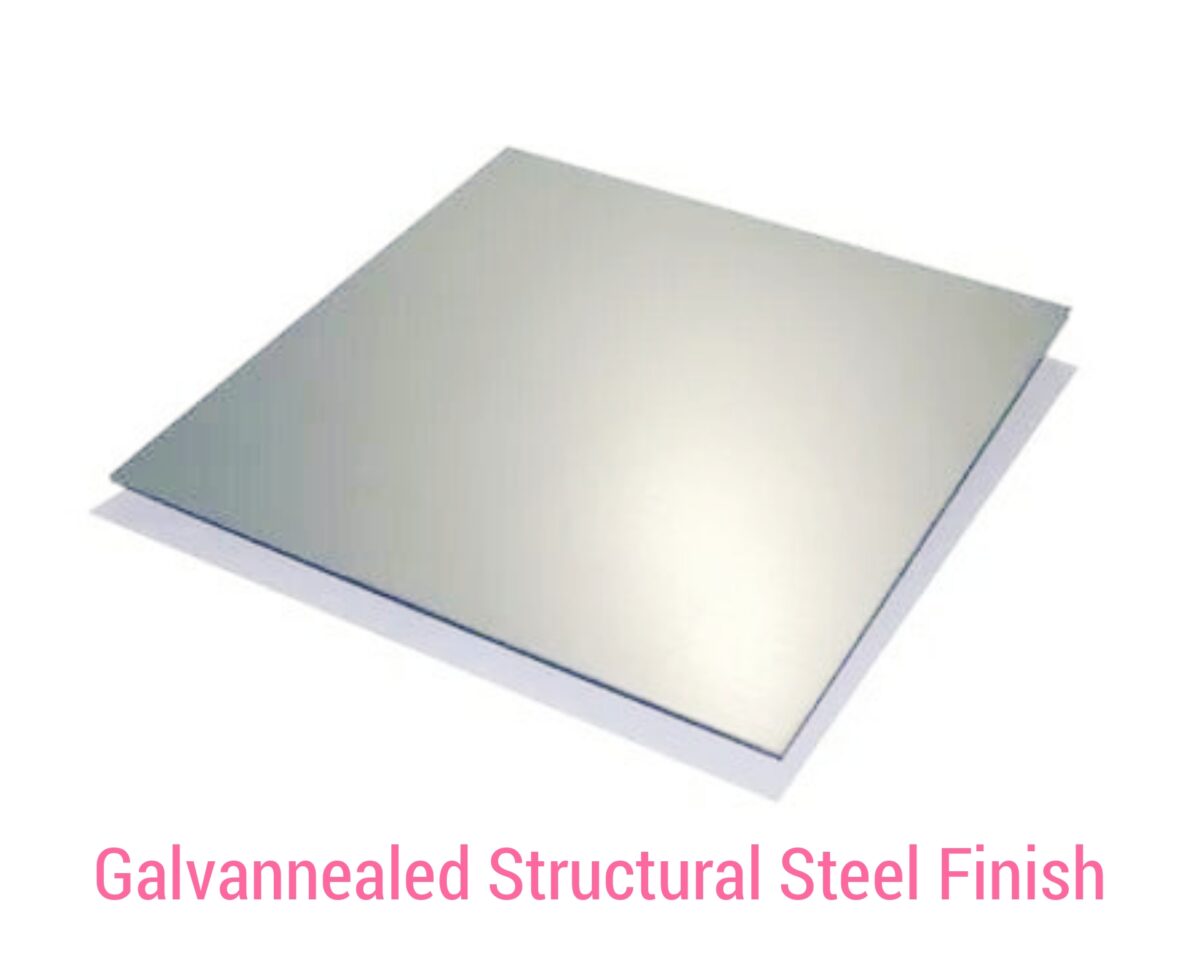
Galvannealing is a specialized process that combines galvanizing and annealing to create a unique finish. The steel is coated with zinc, like in galvanizing, and then heat-treated to diffuse the zinc into the steel, forming a zinc-iron alloy. This results in a smooth, matte finish that offers enhanced corrosion resistance and excellent paint adhesion.
Closing Thought
Structural steel finishing represents a transformative surface treatment technology that is having a profound impact on the performance and appearance of steel structures. Its benefits, ranging from corrosion resistance to superior durability and aesthetics, make it an important step in the manufacturing process.
You Might Also Like: Built Up Steel Sections
Choosing the right finish requires careful consideration of the different techniques, their applications and associated costs, making expert advice invaluable. By prioritizing the quality of finishing, developers, architects and construction professionals can ensure the longevity, safety and aesthetic appeal of their steel creations for years to come.
